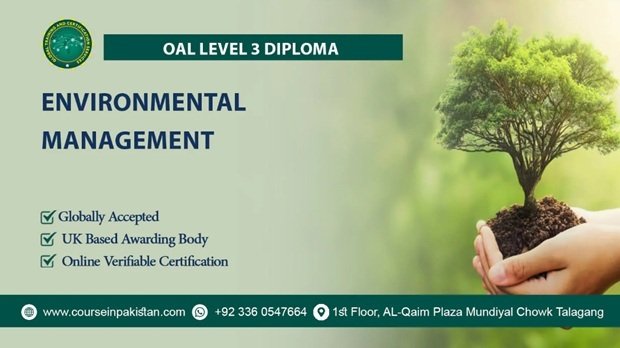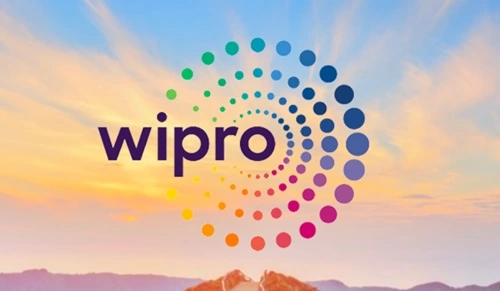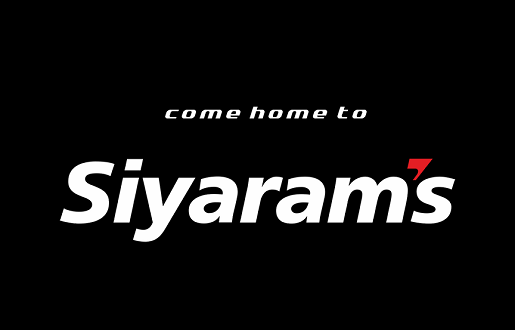Introduction
Environmental safety has in no way been more critical than in our modern-day age of fast urbanization and commercial growth. For DLH Bangko, the Dinas Lingkungan Hidup (Environmental Agency) of Bangko, imposing strong environmental policies and effective guidelines is at the heart of its venture. In this article, we evaluate the effectiveness of DLH Bangko’s environmental regulations and permitting using 7 powerful insights that highlight what’s working, where challenges lie, and what the future might hold.
Understanding how DLH Bangko regulates environmental issues isn’t just an academic exercise. It’s about real impacts — cleaner water, healthier air, better public spaces, and stronger community trust. We will dive deep into their structure, key programs, capacity constraints, and highlight practical recommendations. Ultimately, we want to assess how well DLH Bangko is doing now and how it can improve.

Background of DLH Bangko
To examine DLH Bangko’s effectiveness, we should first understand who they are and what they do.
Origin and Mandate: DLH Bangko (Dinas Lingkungan Hidup Bangko) is the neighborhood environmental company tasked with overseeing environmental safety, pollution control, waste management, and green space planning in the Bangko area. According to its website, DLH Bangko plays an essential role in tracking and restoring environmental health, enforcing regulations, and improving the network’s environmental ability.
Structure, Tasks, and Functions (Tupoksi): The agency’s tupoksi (responsibilities and features) encompass a wide portfolio: policy methods, technical guidance, enforcement, environmental impact testing, waste management (including B3 or hazardous waste), and capacity development.
Its shape is divided into divisions, including Tata Lingkungan (environmental planning), Pengelolaan Sampah & Limbah B3 (waste and hazardous waste), and Pengendalian Pencemaran (pollution control). Standard Operating Procedures (SOPs): To ensure consistency and accountability, DLH Bangko has codified SOPs that outline how paintings are achieved — from allowing, choice, and inspection via public service.
These SOPs are intended to make certain the company runs correctly, transparently, and fairly.
Legal and Regulatory Framework
DLH Bangko’s regulatory power is nested within both national and regional laws.
. At the national level, environmental law in Indonesia (or in Bangko’s jurisdiction) requires environmental impact assessments (AMDAL) for significant projects and mandates pollution standards, waste regulations, and other measures.
. At the local level, DLH Bangko applies these national mandates and also interprets and enforces them in ways sensitive to Bangko’s particular environmental realities — whether in waste accumulation areas, green space deficits, or industrial projects.
The permitting gadget controlled by DLH Bangko is likely to include licenses for waste disposal, pollution emission permits, production permits that might affect the environment, and other regulatory approvals. Through this, the organisation seeks to balance improvement with environmental safety.
Environmental Permitting Processes
A critical part of DLH Bangko’s role is issuing environmental permits. The process generally involves:
Application: Entities (businesses, builders, institutions) observe the required environmental permits.
Environmental Assessment: For vital duties, DLH Bangko calls for an AMDAL or comparable environmental impact assessment to assess potential harm to air, water, soil, and nearby communities.
Public Consultation: Stakeholder involvement is frequently required to permit the local people to voice concerns and contribute to decision-making.
Review & Decision: DLH Bangko reviews the assessment, the technical proposals, and compliance measures. Based on this, they grant, deny, or conditionally approve the permit.
Monitoring & Compliance: Once permits are granted, DLH Bangko monitors compliance and enforces conditions. Environmental monitoring helps ensure permitted entities do not exceed allowed pollution loads or violate waste management requirements.
This permitting technique is significant — it is no longer just office work; it’s a tool for ensuring initiatives don’t degrade environmental quality.
Key Environmental Regulation Programs
DLH Bangko’s work encompasses several major environmental regulation areas:
. Waste Management: Handling of municipal solid waste, temporary disposal sites (TPSS), and planning of waste depots to lessen ad hoc dumping.
. Hazardous (B3) Waste: Management and strong disposal of risky or dangerous waste in compliance with countrywide B3 guidelines.
. Pollution Control: Monitoring and regulating air emissions, water discharge, soil infection, and distinctive pollutant vectors.
. Green Spaces and Restoration: Initiatives to convert degraded or formerly used websites (like antique short waste websites) into inexperienced regions. For example, DLH Bangko turned a former TPSS into a flower garden. These programs reflect a mix of preventive and corrective regulation—DLH Bangko doesn’t just punish violators; it invests in long-term environmental improvement.
Notable Projects by DLH Bangko
A few concrete projects illustrate DLH Bangko’s regulatory impact:
. TPSS to Taman Bunga: One of the maximum visible tasks involved changing a former Tempat Pembuangan Sampah Sementara (temporary rubbish disposal web site) into a flower garden. This not only beautifies the distance but also reduces environmental risk.
. Depo Sampah in Every Kelurahan: To streamline waste management, DLH Bangko plans to build a waste depot in each subdistrict (kelurahan), enabling more organized, greener collection.r Treatment) Project with Lapas: DLH Bangko collaborated with Lapas Kelas IIB Bangko (a nearby prison) to design an Instalasi Pengolahan Air Limbah (IPAL) to deal with sewage generated within the prison, mitigating its environmental impact.
These projects show that DLH Bangko is not only focused on regulatory enforcement but also on infrastructure that addresses environmental problems at their roots. llenges
Even with strong programs, DLH Bangko faces real capacity constraints:
. Human Resources: A major issue is staff shortages. After the removal of many tenaga honorer (contract workers), DLH Bangko had to adjust its waste collection schedule due to fewer personnel available. Budget Constraints: Environmental infrastructure and monitoring are pricey. Without adequate finances, maintaining long-term projects (like depots or IPAL) is hard.ty: Technical Capacity: Effective, allowing, compliance tracking, and environmental assessment require technical understanding (e.g., environmental engineers, inspectors), which is probably in short supply. These constraints likely limit the effectiveness with which DLH Bangko can implement its regulations and realize its vision. pact Assessment
How do we measure whether DLH Bangko’s environmental regulation is effective? Some indicators:
. Environmental Monitoring: Regular examinations of water satisfactory, air emissions, and soil infection enable DLH to assess whether allowing and enforcement are functioning. The amount of waste amassed, recycling prices, and the number of depots constructed assist gauge the impact of its waste control.
. Public Feedback: DLH Bangko accepts public complaints regarding pollution or environmental damage. Projects like the garden conversion and IPAL reflect positive outcomes when successfully implemented.
While there appear to be achievements, systematic public reporting, 1/3-birthday celebration opinions, or obvious overall performance dashboards might enhance accountability.nt & Awareness
Community involvement is a crucial part of DLH Bangko’s strategy:
. Complaint Mechanism: Residents can file pengaduan pencemaran atau kerusakan lingkungan, making DLH Bangko more responsive to local concerns.
dlhbangko.com
. Education & Capacity Building: Through outreach programs, DLH builds local awareness, helping citizens understand environmental risks and compliance.
. Institutional Partnerships: The collaboration with Lapas for an IPAL is a good example: by working with a key local institution, DLH promotes both practical solutions and shared responsibility.
These efforts help build trust and legitimise DLH’s environmental stewardship. reen Initiatives
Looking beyond immediate regulation, DLH Bangko’s long-term vision is promising:
. Green Spaces: By transforming disused or underused sites (like TPSS) into green, aesthetic zones, they contribute to ecological recovery and improve city livability.
. Preventive Regulation: Rather than best reacting to pollutants, DLH Bangko’s goals are to prevent damage via thoughtful infrastructure (depots, IPAL).
. Climate Resilience: While now not explicitly said, inexperienced and waste infrastructure interventions can make contributions to climate resilience (e.G., decreasing runoff and assisting biodiversity).
If scaled to the absolute restriction, one’s efforts can create a sustainable environmental legacy that blessings destiny generations. King ahead, DLH Bangko has a real opportunity to shape a greener, more sustainable Bangko:
. Scaling up IPALs or other wastewater treatment projects could dramatically lessen water pollutants.
. Expanding inexperienced spaces no longer simplest beautifies the metropolis however also offers ecological services (shade, filtration, and biodiversity). With strong potential and network engagement, DLH Bangko should grow into a version for different regional environmental groups.
If current trends continue, and if the right reforms are adopted, DLH Bangko could significantly raise its environmental governance game — benefiting both people and nature.
Conclusion
DLH Bangko shows strong progress through innovative waste-site reuse, strategic planning, and partnerships. Yet limited staff, enforcement gaps, and funding risks restrict its impact. With stronger monitoring, community involvement, and sustainable financing, DLH Bangko can advance environmental health and become a more effective long-term steward of Bangko’s environment.
FAQs
What is DLH Bangko?
DLH Bangko (Dinas LiDLH Bangko (Dinas Lingkungan Hidup Bangko) is the neighborhood environmental enterprise liable for pollution control, waste control, environmental safety, and helping sustainable improvement projects across Bangko.ions, network applications, and compliance sports.
How does environmental permitting work in Bangko?
Permitting starts with an application from a business or project, followed by assessments such as AMDAL and required public consultations. Views the findings and issues and makes a decision. Once approved, the agency continues monitoring through routine inspections and environmental evaluations.
How does DLH Bangko monitor pollution?
DLH Bangko conducts regular inspections and uses monitoring systems for air, water, and waste quality. They also review network complaints to identify violations or environmental risks.
What takes place if an agency violates guidelines?
What administrative sanctions, fines, or perhaps revocation are allowed? Enforcement ensures organizations observe environmental guidelines.
How can the network engage?
Residents can file pollution or damage complaints through DLH’s reporting system and participate in consultations or outreach programs.














